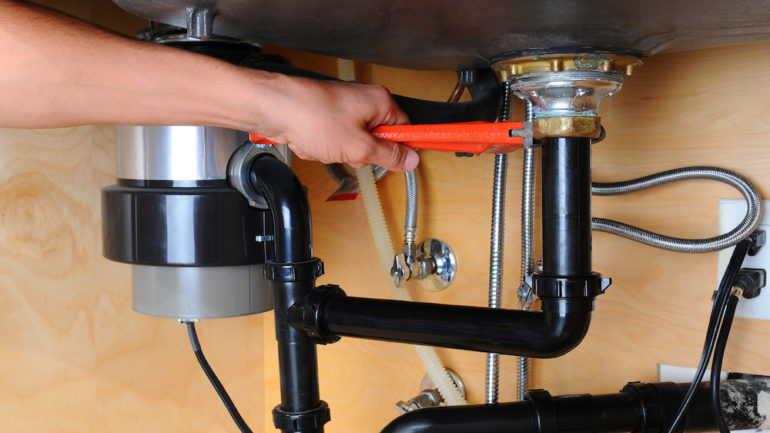Garbage disposals get no respect. Day in and day out, they toil away for us while we shove all manner of things down their throats. Let’s give them a little love with these tips.
Today’s disposals are better
What your garbage disposal can handle depends on the quality of the unit. If you live in a tract home and didn’t upgrade the disposal when you purchased, it is probably an inexpensive, builder-grade unit. Even these, however, are stronger than the early models. Unlike Grandma’s disposal, newer units can handle items like fruit peels, eggshells, and coffee grounds if they are fed in slowly.
An upgraded model can handle more. Top brands include the InSinkErator Evolution series, which ranges in price from around $200 to more than $400. These garbage disposals are powerful, run quietly and can handle a family-sized load. Other top brands are Kitchenaid, GE, and Waste King.
The disposal’s horsepower helps determine what it can handle. Larger motors have a larger grinding chamber that can take on more food waste. For family-sized workloads, choose a garbage disposal with one-half to three-quarters horsepower.
Disposal do’s and don’ts
Today’s disposals can handle most foods except fat and non-food objects. Never pour cooking fat down the disposal; instead, put it in a metal or heavy glass jar and place it in the trash. When disposing of food with incidental grease, use cool running water from the tap to ensure that the grease passes as a solid, rather than a liquid that can later solidify like wax.
Only the larger, more powerful models can handle bones, but it’s best to dispose of them some other way. And don’t try to grind non-food items such as twist ties, matches and paper towels.
Proper use and care
Run the water for several seconds before turning on your garbage disposal. Operate the disposal until it sounds as though the food has cleared, then continue to run the water several more seconds to ensure the waste has rinsed completely through.
Cleaning the disposal should be done with a small amount of baking soda and some lemon or lime peels. Never use strong household chemicals, which can damage the unit. Pouring ice into the machine and running it can clear small, embedded food particles.
If the disposal stops working
What if your disposal stops working? Before setting up an expensive visit from your plumber, go under the sink, find and push the garbage disposal’s reset button, then try the disposal again. If it still doesn’t work, or if it sounds like it’s trying to run but can’t, use the reset wrench key that came with the disposal. Fit the key into the slot on the bottom of the unit, then turn the device back and forth to loosen up food wedged in the machine. If you can’t find the key, a quarter-inch Allen wrench will do the trick.
Related -What is Composting and Why Should I do it?


